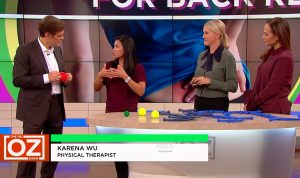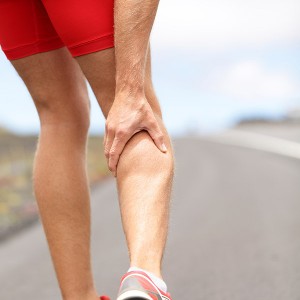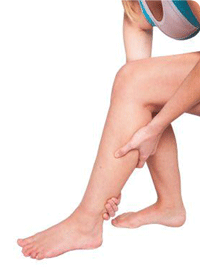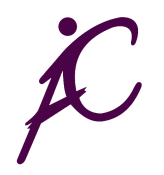 ActiveCare Physical Therapy, PC
ActiveCare Physical Therapy, PC
29 West 38th Street
Suite 601
New York, NY 10018

* We Accept Medicare | No Fault | Workers Comp *
How to Handle a Calf Strain or Injury
Two muscles make up the calf muscle: The gastrocnemius muscle which is the big muscle at the back of the lower leg and the soleus, the smaller one located just below the gastrocnemius. Calf strain or injury can occur due to poor stretching or overuse. Calf strain is common in athletes, especially runners and bicyclists. Common symptoms of calf strain or injury include:
- Sudden pain at the back of the leg (midway between the knee and the heel).
- Difficulty balancing or standing on tiptoe.

- Swelling (with or without) bruising in the calf muscle.
- Pain when the muscle is contracted against resistance, walking or upon standing.
Treatment for Calf Muscle Strain or Injury
There are many things you can do to relieve minor to serious injuries. Physical therapists recommend that you follow the RICE technique: Rest, Ice, Compression and Elevation.
- Rest as much as possible. They also recommend the use of crutches if you feel pain when walking or upon standing.
- To help reduce swelling apply ice to the area that is in pain. The best method is to apply for 15 minutes every 2-3 hours. Wrap the ice in a damp towel to prevent skin burns.
- Compression helps reduce swelling and bleeding when you have a calf strain or injury. A compression bandage or tubi-grip bandage will work temporarily until medical attention is received.
- Elevating your leg will reduce swelling and help blood run away from the injured calf muscle. When suffering from calf pain, put your feet up and read about treatment and rehabilitation for your calf strain or injury.
Once it is comfortable, your physical therapist may recommend some active stretches such as pulling your toes towards you, hold for 2-3 seconds and then relax. Repeat 10-20 times. Do not try any exercises if in serve pain and until after your physical therapist has evaluated the source of your calf strain or injury.
If you are suffering from a severe calf strain or injury, its best to stop playing and rest right away. If you are experiencing severe pain possible due to a muscle rupture, immediately visit your doctor or local emergency room. If the muscle is ruptured or there is considerable injury, treatment can involve surgery to repair the torn calf muscle.
Physical Therapy for Calf Stain or Injury
Physical therapy treatment begins with pain management, stretching and strengthening exercises. Your physical therapist will test your calves for flexibility and proper balance between your legs. Part of the treatment for calf strain includes ice and ultrasound to relieve pain before beginning stretching exercises. Your physical therapist will also train you how to properly stretch the calf muscles to get rid of tightness and soreness that will follow. Manual therapy (massage) may also be performed to get rid of trigger points.
The next phase of treatment includes walking and strengthening exercises to help maintain fitness and strengthen the muscles to prevent the recurrence of injury. As you get stronger, you may return to your previous physical activities as advised by your physical therapist.
Physical therapy will help you properly recover from a calf strain or injury. Contact ActiveCare today to schedule an appointment with the best physical therapists in NYC!
